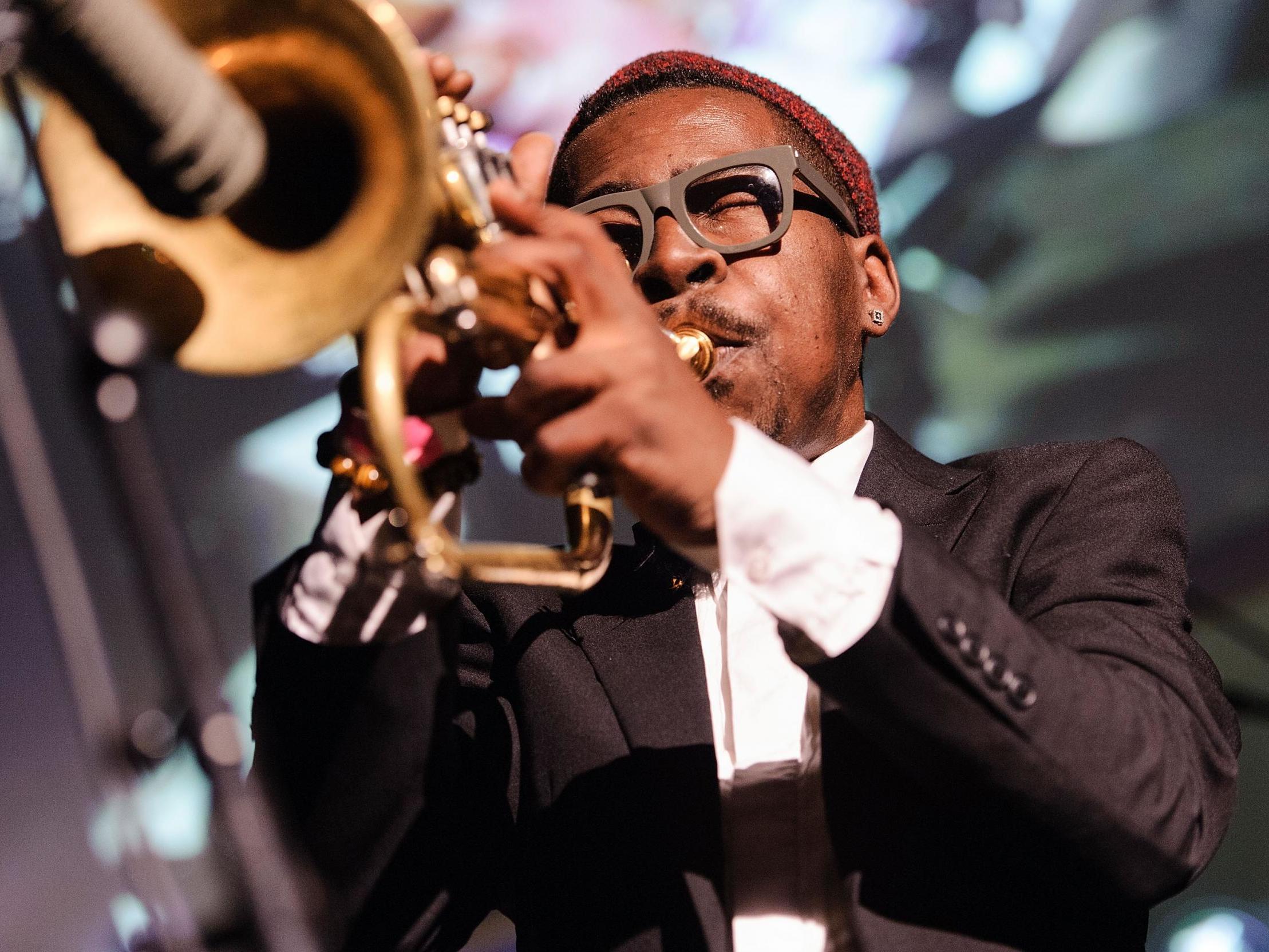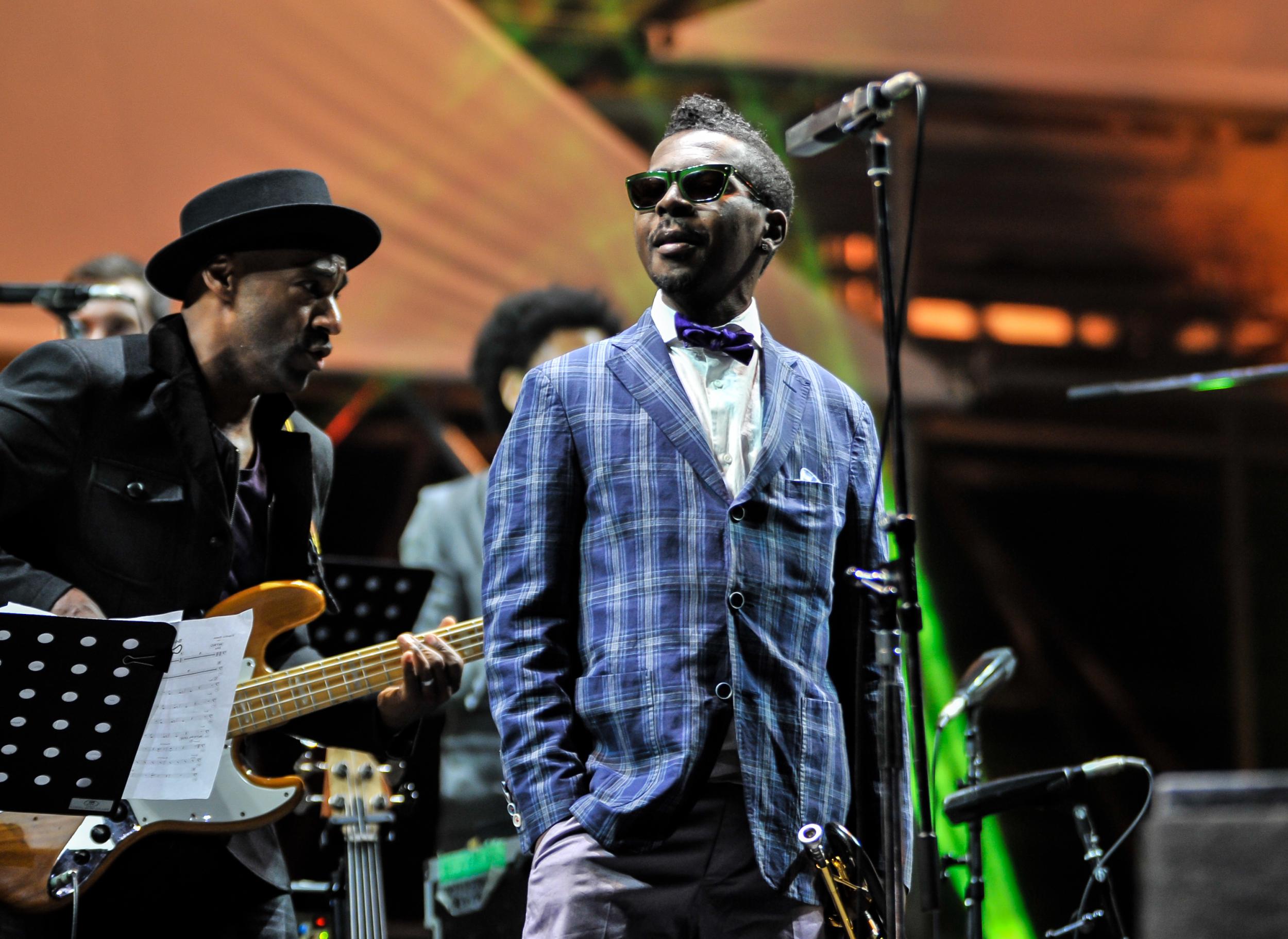Roy Hargrove: Award-winning trumpeter once dubbed the hottest jazz player in the world
The restless bandleader explored multiple musical genres but always stayed faithful to his roots in jazz

Your support helps us to tell the story
From reproductive rights to climate change to Big Tech, The Independent is on the ground when the story is developing. Whether it's investigating the financials of Elon Musk's pro-Trump PAC or producing our latest documentary, 'The A Word', which shines a light on the American women fighting for reproductive rights, we know how important it is to parse out the facts from the messaging.
At such a critical moment in US history, we need reporters on the ground. Your donation allows us to keep sending journalists to speak to both sides of the story.
The Independent is trusted by Americans across the entire political spectrum. And unlike many other quality news outlets, we choose not to lock Americans out of our reporting and analysis with paywalls. We believe quality journalism should be available to everyone, paid for by those who can afford it.
Your support makes all the difference.Roy Hargrove was a Grammy-winning jazz trumpeter who seamlessly shifted from one style of music to another.
The musician explored Cuban and electronic music, R&B and hip-hop while performing with artists as diverse as Dizzy Gillespie, Stevie Wonder and Common
Hargrove emerged as a fully formed talent in his teens, gaining an early boost from his fellow trumpeter Wynton Marsalis and appeared on bandstands with bebop pioneer Gillespie while still in high school in Texas.
Only 20 when he released his first album, Hargrove was heralded as the leading light of the “Young Lions” movement, a new generation of musicians deeply schooled in the tradition of Duke Ellington, Charlie Parker, Art Blakey and other jazz pioneers.
“Not since Wynton Marsalis hit the Big Apple more than a decade ago,” Associated Press journalist Charles Gans wrote in 1991, “has a young jazz trumpeter made his presence felt so quickly on the New York scene.”
At 21, Hargrove joined saxophonist Sonny Rollins at a concert at New York’s Carnegie Hall. Rollins had been bandmates with trumpeter Clifford Brown in the 1950s, who was Hargrove’s musical idol.
At the Carnegie Hall concert, Hargrove tested Rollins’ improvisational abilities and played ballads with the sensitivity of someone older than his years. (“He plays with a sweetness that speaks of a world of hurt,” Tom Masland later wrote in Newsweek.)
His performance alongside the formidable Rollins gave Hargrove instant credibility among musicians. New York Times critic Peter Watrous pronounced him “an extraordinary trumpet player” and “one of jazz’s finest improvisers, and he’s only getting better”.
By 1994, Hargrove was regularly ranking at the top of critics’ and readers’ polls in jazz magazines. His recording that year, With the Tenors of Our Time, which featured him with such master saxophonists as Joe Henderson, Johnny Griffin and Branford Marsalis, sold more than 100,000 copies, an extraordinary number for a mainstream jazz album.
“Move over, Wynton,” a Newsweek article noted. “The hottest jazz trumpet player in the world, at least this year, is no longer Marsalis ... It’s 25-year-old Roy Hargrove.”
Always restless and never content to stay in one musical groove, Hargrove branched out to other styles without forsaking his roots in jazz. Elements of rhythm and blues, soul, gospel and hip-hop were soon reflected in his performances.
He won his first Grammy Award in for his 1997 album Habana, in which he brought Cuban and American musicians together for a hypnotic style of Cuban-flavoured jazz. His second Grammy came for the 2002 album Directions in Music: Live at Massey Hall, a straightforward jazz performance featuring Hargrove with Herbie Hancock on piano and Michael Brecker on tenor saxophone.

Beginning in the 1990s, Hargrove often made guest appearances on the recordings of other artists, including Washington guitarist Danny Gatton, hip-hop performer Common and neo-soul singers D’Angelo and Erykah Badu – a schoolmate from Dallas.
In 2003, Hargrove launched a band called RH Factor, which added cascading layers of funk, soul and of electronic music to his blistering jazz riffs. Among the performers who appeared on his genre-crossing albums were D’Angelo, Q-Tip, Meshell Ndegeocello and Badu.
“My goal with RH Factor has always been to try to erase the lines between the mainstream and the underground – straight ahead [jazz] and hip-hop/R&B,” Hargrove told the All About Jazz website. “You have musicians who know all the theory and harmony. Then you have the musicians who have a direct line to the masses and what they like to hear. If you can combine the two, it can be something innovative as well.”
Roy Anthony Hargrove was born on 16 October, 1969, in Waco, Texas. He lived with relatives in the small town of Mart before moving to Dallas when he was eight and his father was discharged from the air force.
Both of his parents were musically inclined, and young Roy was nine when he began playing a cornet his father bought at a pawn shop. He was recognised as a prodigy and attended a high school for the performing arts in Dallas.
His teachers introduced him to the recordings of Clifford Brown, Fats Navarro, Miles Davis and other jazz trumpeters, and at 17 he met Marsalis, who came to the school for a clinic. Marsalis helped arrange for private lessons, and Hargrove was soon appearing with major jazz stars. He studied at the Berklee College of Music in Boston before moving to New York.
He released more than dozen albums by the time he was 30. Several of them, including Diamond in the Rough (1990), Of Kindred Souls (1993), With the Tenors of Out Time (1994), Approaching Standards (1995) and Parker’s Mood (1995), were acclaimed as among the finest jazz recordings of their time.
In 2014, Hargrove was convicted of cocaine possession in New York. He had been on dialysis for 13 years, his manager, Larry Clothier, said.
Hargrove died of complications from kidney disease on 2 November, 2018, at a hospital in New York. He was 49. He is survived by his wife, Aida Brandes; a daughter from an earlier relationship, Kamala Hargrove; his mother, Jacklyn Hargrove; and a brother.
Hargrove maintained three working bands until his death: RH Factor, a 21-piece big band and an acoustic jazz quintet.
For all his adventurousness, he never abandoned jazz but saw different styles of music as part of a intertwined rainbow of expression.
“The spirit and energy that musicians are putting into it is the same,” he told the San Jose Mercury News in 2003. “It’s just a different way of speaking, a different dialect ... I’ve been around all kinds of musicians, and if a cat can play, a cat can play. If it’s gospel, funk, R&B, jazz or hip-hop, if it’s something that gets in your ear and it’s good, that’s what matters.”
Roy Hargrove, jazz trumpeter, 6 October 1969, died 2 November 2018
© Washington Post
Join our commenting forum
Join thought-provoking conversations, follow other Independent readers and see their replies
Comments